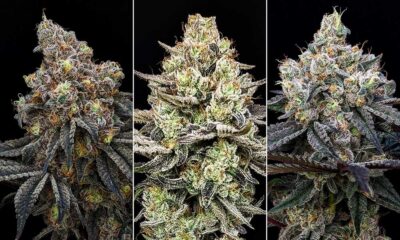
Medical
Research Proves Teen Use Doesn’t Increase In MMJ States
Sorry parents. Sorry lawmakers. Your tall tales of crazed marijuana smoking youth and weed peddlers influencing your prized boy scout and beta club members to smoke pot aren’t even remotely true.
A recent study published in The Lancet Psychiatry by researchers at Columbia University showed that there hasn’t been an increase in the use of cannabis among young people in states where medical cannabis laws have been passed. The study examined the marijuana use of over a million teens between the years 1991 and 2014 by finding out if they had smoked weed during the last 30 days.
Concerns about the impact that cannabis use has on teenagers has been a driving force against it during the War on Drugs. However, as the days of the extraneous denial of its use by citizens are long gone and the introduction of medicinal marijuana in 23 states and the District of Columbia, the concern for the youth seems to be stronger than ever.
“An easy assumption to make would be that medical marijuana laws would increase access to marijuana and therefore use among adolescents would increase,” wrote Kevin Hill, from the Division of Alcohol and Drug Abuse. “Policies might sometimes be shaped by preconceived notions that do not end up being true.”
According to Dr. Deborah Hasin, professor of epidemiology at Columbia University and team lead, there wasn’t a rise in teen marijuana use after a state had been legalized for medicinal use.
“The risk of marijuana use in states before passing medical marijuana laws did not differ significantly from the risk after medical marijuana laws were passed,” wrote Hasin and her team. “State-level risk factors other than medical marijuana laws could contribute to both marijuana use and the passage of medical marijuana laws, and such factors warrant investigation.”
Hasin and her team utilized a 2014 Monitoring the Future study to complete the majority of their research. This study assessed the drug use of students in the U.S. by measuring over one million students in the eighth, 10th and 12th grades in 48 states from 1991 up until 2014 by having them fill-out questionnaires regarding any pot usage within the last 30 days.
Between 1991 and 2014, 21 states passed laws that legalized medical cannabis (New York and Minnesota passed laws since the most recent study). After data was adjusted for dynamics such as sex, age, race, parental education, class size, type and location of school, the study found that 16 percent of teens used marijuana in states where medical marijuana is or would be legalized compared with 13 percent of teens in states where there are no laws legalizing weed in any shape, form or fashion. This study also showed that high school seniors would try marijuana or use it more often if it were legalized.
“This study gives the most definitive answer to date on the contentious question of whether medical marijuana laws increase cannabis use among teenagers,” said Hill to The Verge.
A 2014 study from the Journal of Adolescent Health established comparable results as it examined data from nearly 11 million teenagers and found that there was no statistical difference in pot usage before or after changes to policies were made. This study was 20 years shorter in length than the aforementioned study.
The authors of the study published in The Lancet Psychiatry acknowledge that marijuana use can harm teenagers by altering their brain development. For teens in this study however, marijuana usage peaked in the late ’90s and it has not reached that level since, with pot use among teens decreasing over the last five years.
Do you live in a state that needs medical cannabis? Tell us about it the comments.























